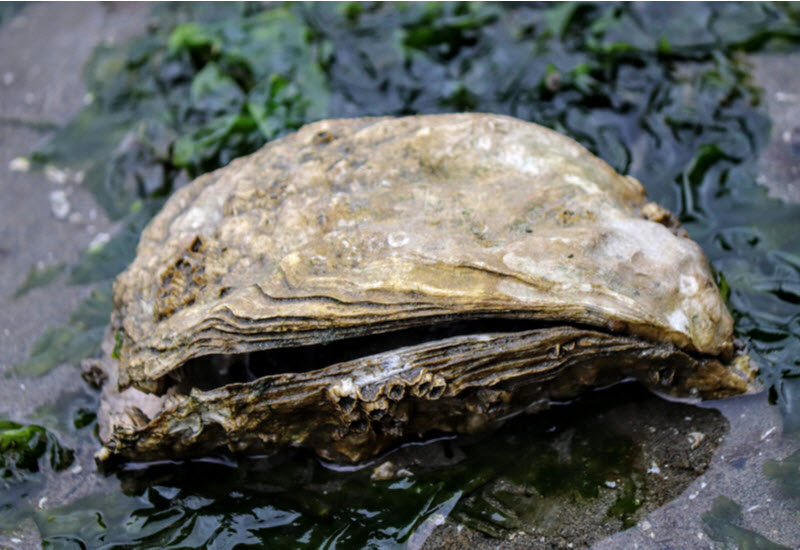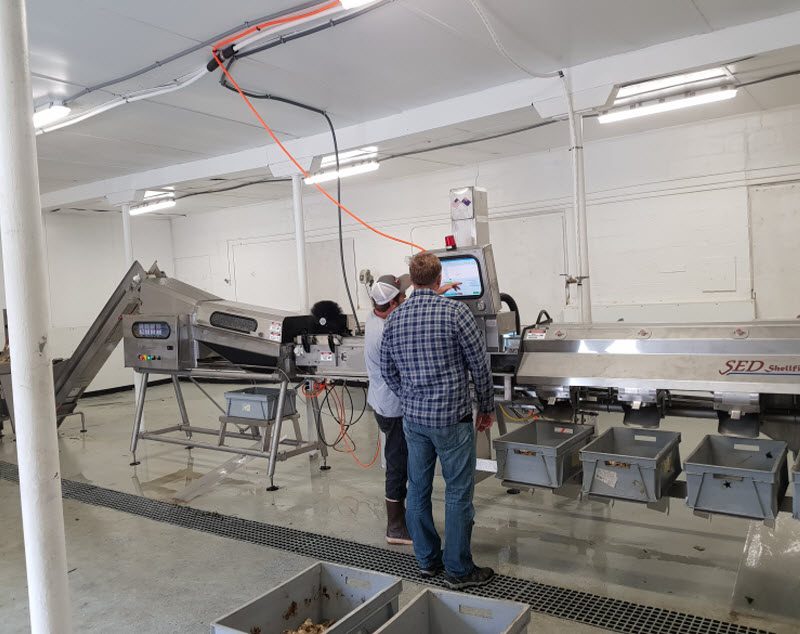
Overcatch refers primarily to spat, juvenile oysters, mussels, barnacles etc that attach themselves to the growing adult oysters. Overcatch is problematic to oyster farmers, as they need to remove it before the adult or host oyster can go to the market. SED Graders design overcatch treatment solutions that work.
The treatment of overcatch has been a combination of mechanical cleaning or the use of hot liquid baths. Both methods are reasonably effective; however, they do share limitations. Both are time consuming and the hot bath method is prone to high mortality rates of the host oysters. In some areas it can be a rare occurrence when an oyster farmer has a harvest that doesn’t require overcatch treatment.

New innovation in overcatch treatment
For a long time, many large oyster farming operations and guilds have been trialling and experimenting with innovation and science to find more sustainable and efficient solutions for the treatment of overcatch. A great deal of research has been applied, producing outstanding results. The focus has centred on cold shock treatments that greatly reduce the mortality rates whilst improving time efficiencies and overall consistency with less likelihood of error.
These experiments have been ongoing since 2005 and the resultant data has taken much of the guesswork out of the overcatch treatment process, which was inherently problematic when utilising hot liquid treatments. Overcatch baths heated to 70˚C are expensive to run and have a very narrow window of success. Too long in the bath and the oyster dies; not long enough and the process is fruitless. The hot liquid method is prone to hit and miss outcomes and requires a highly experienced team member to undertake the procedure.
Cold shock treatments immerse the live adult oyster in a cold hypersaline bath, chilled to -12˚C to -18˚C. Commercial scale experiments conducted by Southern Cross Marine Culture unveiled tolerance levels indicating adult oysters submersed in the hypersaline chilled bath for a period of 30s-60s removed 100% of overcatch, including additional pest species, without any negative effect on the host oyster.

Innovative overcatch treatment bath
Working in collaboration with Southern Cross Marine Culture, SED Graders engineered a prototype machine that immersed a full basket of oysters. It was very successful but expensive.
Recently, SED Graders have developed a design that incorporates a hypersaline cold shock bath into the vision grader processing line.
Using a conveyor, stock oysters travel from the bulk hopper via a washer, directly into the brine bath and back into the grading line. There is no secondary removal process required.
Processing 240 sale sized oysters per minute, the system delivers speed, accuracy and an exceptionally high success rate without additional labour costs or reduced production turnover. When a harvest does not incur any overcatch, the brine bath stays in the line but is bypassed.

Automation is the key to a sustainable future
The collaboration of science and engineering has enabled SED Graders to design and manufacture high quality automation solutions for the oyster industry.
The SED Graders’ vision grader grades and bags 240 average sale sized oyster oysters per minute (or faster for smaller sizes). A single operator system, now with the added advantage of the overcatch treatment, the vision grader is fast becoming an essential part of profitable oyster farming operations.
Traditional organic growing methods are well established and produce a quality of stock oyster that is highly regarded on the global market. For farmers to remain profitable and sustainable, introducing automation to the grading and harvest processing line is the key to increasing their market share and remaining profitable for future generations.

Overcatch treatment
Our team is available to demonstrate and discuss the engineering specifications and solution focused advancement in overcatch treatment. The SED Graders’ overcatch brine bath would be easily retrofitted to existing SED Graders’ vision grading machines or form part of a new vision grading installation at your processing facility.
Whether your farm is located in Australia or overseas, contact us directly and we can discuss and advise you on the most appropriate grading and overcatch engineering solution for your operation.

SED Graders - Australian and family owned
SED Graders is an Australian and family owned company, creating automation technologies that are greatly improving the efficiency and profitability of oyster farms in Australia and around the world.
With many of our grading and sorting machines benefiting oyster farming operations throughout Australia, Japan, Canada, Mexico, New Zealand and in the USA, SED Graders are continually innovating advanced solutions such as our overcatch treatment prototype. Just like oyster farming, SED Graders play the long game and with over 20 years in the industry, you can trust our machines and our team to deliver on our promises.
Contact us for any questions you may have and when you are considering a SED Graders’ vision grading machine or upgrading your current machine with an overcatch treatment bath.
